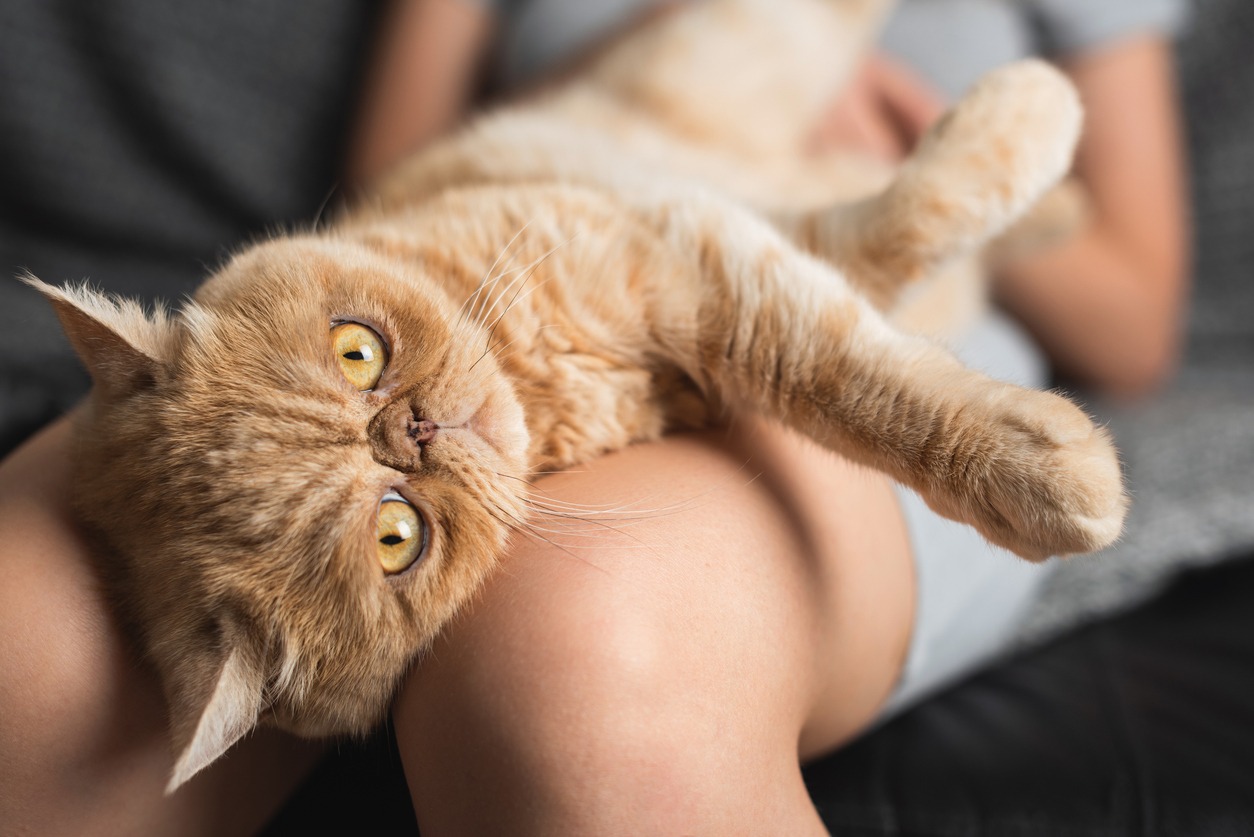The Exotic Shorthair is known to be the lazy man’s Persian because it has the sweet face of the Persian cat but has a short, plush coat that is easier to groom and take care of. It is also similar to the Persian in many ways, including its temperament and conformation with the exception of the coat. They are also more laidback compared to Persian cats. Read on to know more about the history and characteristics of the Exotic Shorthair cat breed.
History
The Exotic Shorthair was developed to be a short-haired version of the Persian cat. The Persian cat was used as an outcross by some American Shorthair breeders in the late 1950s in order to improve their body type. There were also crosses that were made with the Russian Blue and the Burmese. The look of the crossbreed gained recognition in the show ring. However, there were unhappy American Shorthair breeders who successfully produced a new breed standard that would disqualify American Shorthairs that were crossbred or showed signs of crossbreeding.
There was one American Shorthair breeder who saw the potential of the Persian and American Shorthair cross. He proposed the breed and in 1966, he eventually got the Cat Fancier’s Association judge and as well as American Shorthair breeder named Jane Martinke to recognize them as a new breed under the name Exotic Shorthair.
In 1979, the International Cat Association recognized the breed as the Exotic Shorthair. The Cat Fancier’s Association closed the Exotic to shorthair outcrosses in 1987, making Persian as the only allowable outcross breed. Exotics today are recognized by all cat registries. And in the present time, they are outcrossed only to Persians and Himalayans and not to any shorthaired breeds.
Characteristics of an Exotic Shorthair Cat
Average weight: 7 – 12 pounds
Life span: 8 – 15 years
Hypoallergenic: No
The Exotic Shorthair’s standard is very similar to Persian cats except for its coat. It has a big, oval head, rounded forehead, and full cheeks. Its nose is broad and it has a strong chin and a broad and powerful jaw. Its ears are small and rounded at the tip, and they are widely spaced and well-furnished with hair on the inside. Its eyes are large and round which are colored from gold to copper. It has a short and thick neck and a medium-sized body that is low to the ground. Its chest is broad and its shoulders are massive with large-boned powerful muscles. Its paws are round and large and its tail is short, thick, and has a rounded tip.
The Exotic Shorthair’s coat is medium in length and it is soft, thick, and plush with a rich and thick undercoat. It does not have a plume-like tail and a ruff which Persians have. They have an infinite variety of coat colors and patterns which are divided into color divisions such as silver, golden, particolored, and bicolor divisions. There are also some that have various pointed patterns of the Himalayan.
Just like Persians, Exotics are sweet, docile, and quiet pets. But they have the reputation of being more active and curious than Persians, making them more suited pets to active families. According to some, males are sweeter and more affectionate than females who are sometimes quite aloof. Exotics love to play with their people but they can also entertain themselves if you are busy or away. They have soft voices that are pleasant and musical.
Exotic Shorthairs are also adaptable cats and they can do well in homes with children who treat them nicely. They can also get along well with cat-friendly dogs, especially when introduced to them at a younger age.
Caring for an Exotic Shorthair Cat
Exotics are called the lazy man’s Persian because they are much easier to groom and take care of compared to Persian cats. Since they have short coats, it means that these do not mat. You simply just have to comb it once or twice a week using a stainless steel comb to keep your pet’s coat looking beautiful.
During their shedding season, you will need to give your Exotic additional grooming and bathing to remove dead hair. After bathing, dry it thoroughly using a professional stand dryer or a hand-held blow dryer. Just make sure that the temperature setting is low to prevent burns.
Exotics have pushed-in faces and their eyes can have a tendency to tear. To prevent them from having ugly stains, wash your pet’s face every day, particularly beneath the eyes. You should also brush your pet’s teeth daily to prevent periodontal disease and bad breath. Keep your Exotic Shorthair as an indoor-only cat because letting it go outside might put it in danger from attacks by dogs and other animals and as well as from being hit by a car.
The dietary needs or foods for Exotic Shorthairs are identical to the standard nutritional needs of most cat breeds. However, since they are brachycephalic breeds or those that have broad, short skulls and flat faces, they might have some trouble with chewing and swallowing. Therefore, it’s important to give them foods that are easy to chew and swallow such as wet foods. You can also visit your local vet to know more about what kind of foods and diet are the best for your Exotic Shorthair cat.
The Exotic Shorthair is indeed a great pet for those who are looking for a Persian-like cat that is easier to groom and take care of. They will be able to bring pleasure to a family for many years because they stay playful as adults. They are adorable to look at, peaceful, and clean, making them the “best of two worlds”, so what more could you ask for the perfect pet.

